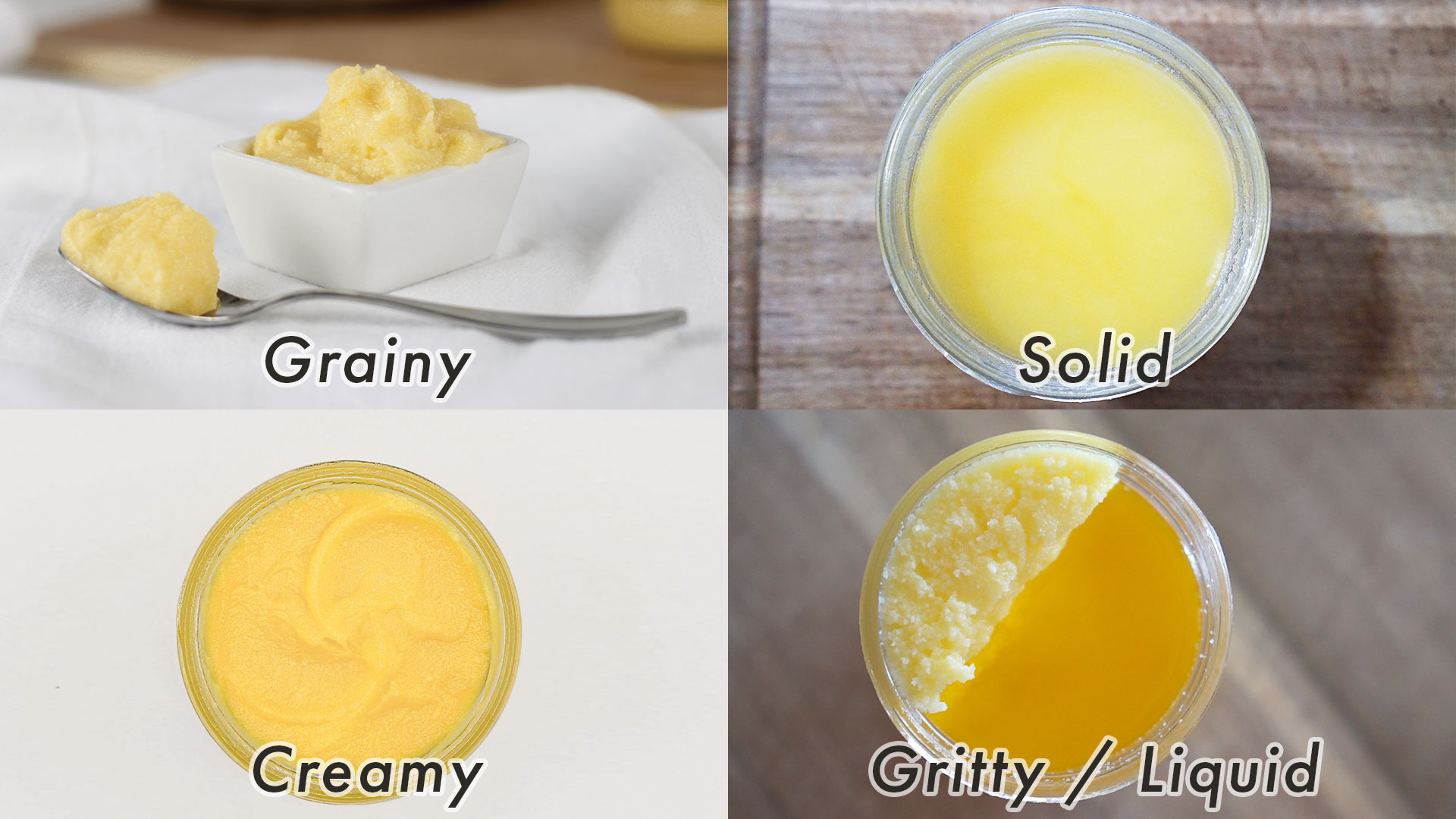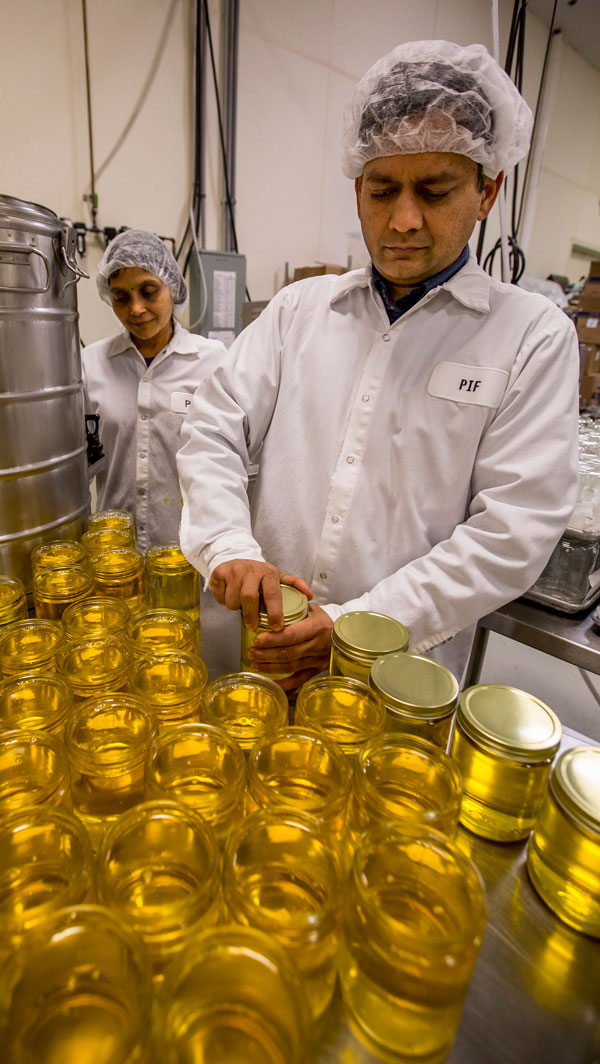Ghee contains many fatty acids with different melting points, which allows it to exist at many different textures, even at the same temperature. Grainy/Gritty, Solid, Creamy, and Liquid are all normal textures of traditionally made ghee.


When we make small batches, we pour the ghee into the jars when it is still liquid, close the lids, and then leave the jars to cool on a flat surface. Due to the variety of fatty acids in ghee, ghee that cools more rapidly, becomes more solid texture. Ghee that is cooled more slowly retains a softer or even completely liquid texture. What this means in practice is that the ghee at the edges of a batch are more solid, and the ghee jars in the center are more liquid. This only affects texture, but there is no effect whatsoever on the taste, quality and shelf-life of the ghee.
Ghee is primarily used either as a cooking fat or as a spread on warm foods. In both of these cases, this grainy, runny or separated texture disappears in a matter of seconds. For example, someone who has never seen crystallization of honey in the winter may consider it as a product defect. Upon further investigation we will find that it is perfectly normal.
It is a simple matter to alter the texture of your traditional ghee to something more your preference. We provide a tutorial on how to do this, since many of our customers prefer one texture over another.
How to change the texture of your ghee:
First you will need to melt the ghee. You may do so by removing it from the jar, melting in a small pan and then pouring back in the jar. Alternatively, you can fill a pot with hot water and submerge tightly closed ghee jar in it to melt the ghee. Keep the water level below the lid. The idea is to melt the ghee completely until it is liquid.
To make a solid or creamy ghee—after the ghee is melted, immediately place the jar in the refrigerator to rapidly cool, and leave overnight. (Do not freeze.) Take the jar out of the refrigerator the next day and leave it on the counter-top. Depending on the ambient temperature of the room, the ghee may be more solid or more creamy at room temperature.
To make a grainy ghee—instead of refrigeration, cool your ghee more slowly by placing the melted ghee on the countertop and covering with a kitchen towel to cool overnight. The result should be a ghee with a more grainy texture, which you can then close with a lid and leave at room temperature.


Thank you so much for this tip! I made ghee for the first time and it never fully solidified and was grainy. I thought I did something wrong. I followed your instructions to the letter and now my ghee is soft but solid and perfectly smooth! Thanks again for the great tip.
How can I turn the ghee that is of smooth textured to grainy ? I like it that way
Hi! If you prefer the grainy texture, first melt the ghee, and then cover the jar with a towel, as it cools, it will be a grainier texture.
Should the towel be damp/ wet?
Sorry about the follow up, but I really want grainy ghee too.
Hello! Thanks for your question. The towel does not need to be damp. Just a plain kitchen towel will do.
Hi, can you tell me why ancient organic ghee is always so smooth and has a good caramel flavor, but most other ghee is grainy and less flavorful? I want to learn how to make ghee that is smooth and caramel flavored. Thanks!!
I like my Ghee dark colored and with a caramel flavor. I’ve found that I have to continue cooking until the milk solids on the bottom of the pan are burnt. There have been a couple of times I thought it had gone too far, but the taste was wonderful.
My ghee had white streaks in it. I did let it “cook” until the solids turned brown on the bottom, then i strained through a piece of muslin because l didn’t have cheesecloth. As an aside, l didn’t realize it had “natural flavors” added (huh??) and l had to pour my batch into a larger pan most of the way through because l melted too much at once, l couldn’t tilt my pan enough to see if it the solids were turning brown. Is it safe to keep thoat batch as is for storage? In this same batch, there are gray spots in between the fat and jar. Showed up the same day l made it, after it cooled to solid. +love the flavor of the unsalted milk solids. Almost like a caramel flavored yogurt. Thanks!
My butter never turned brown on top or bottom and I kept cooking it way after 10 minutes. I had to use a non-stick pan as I had no other.